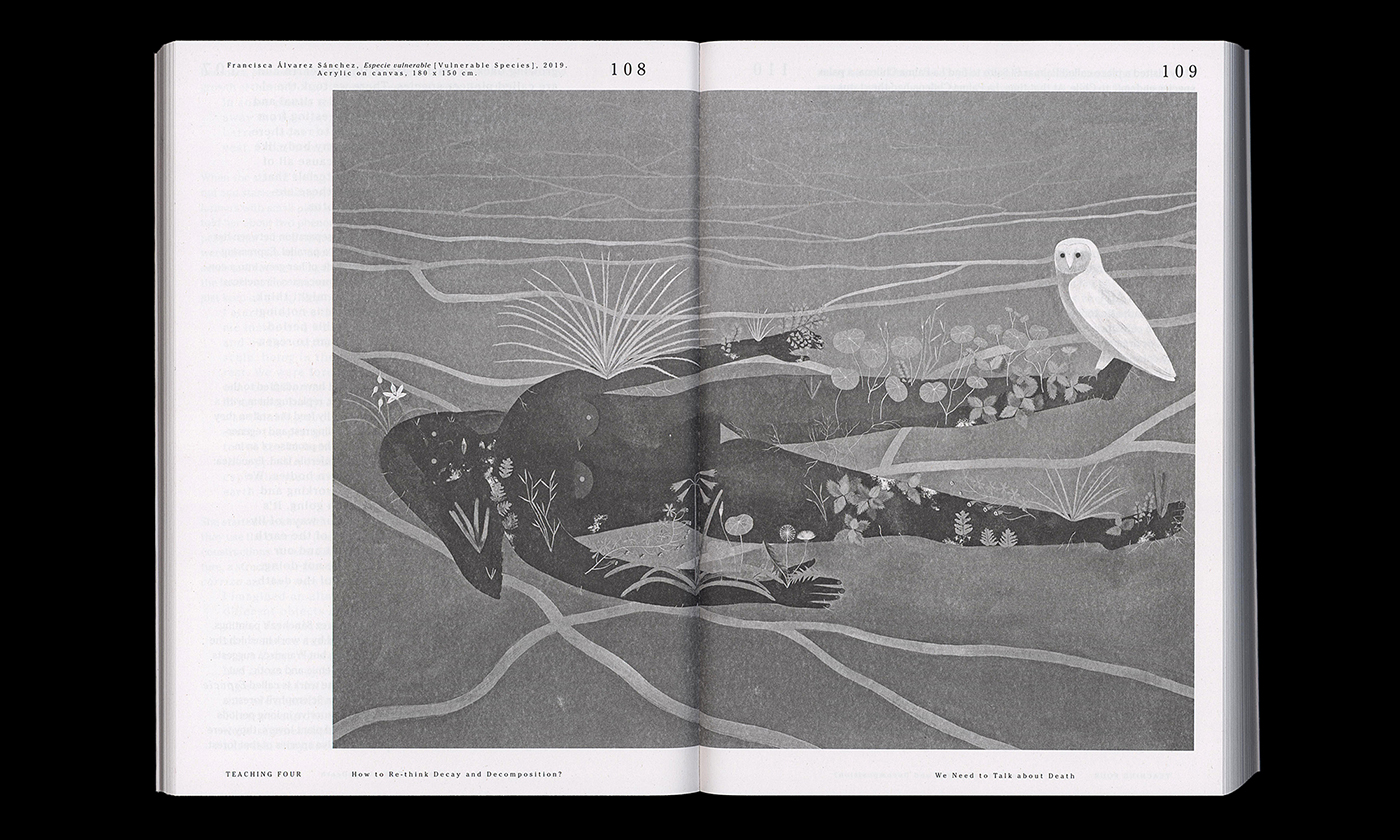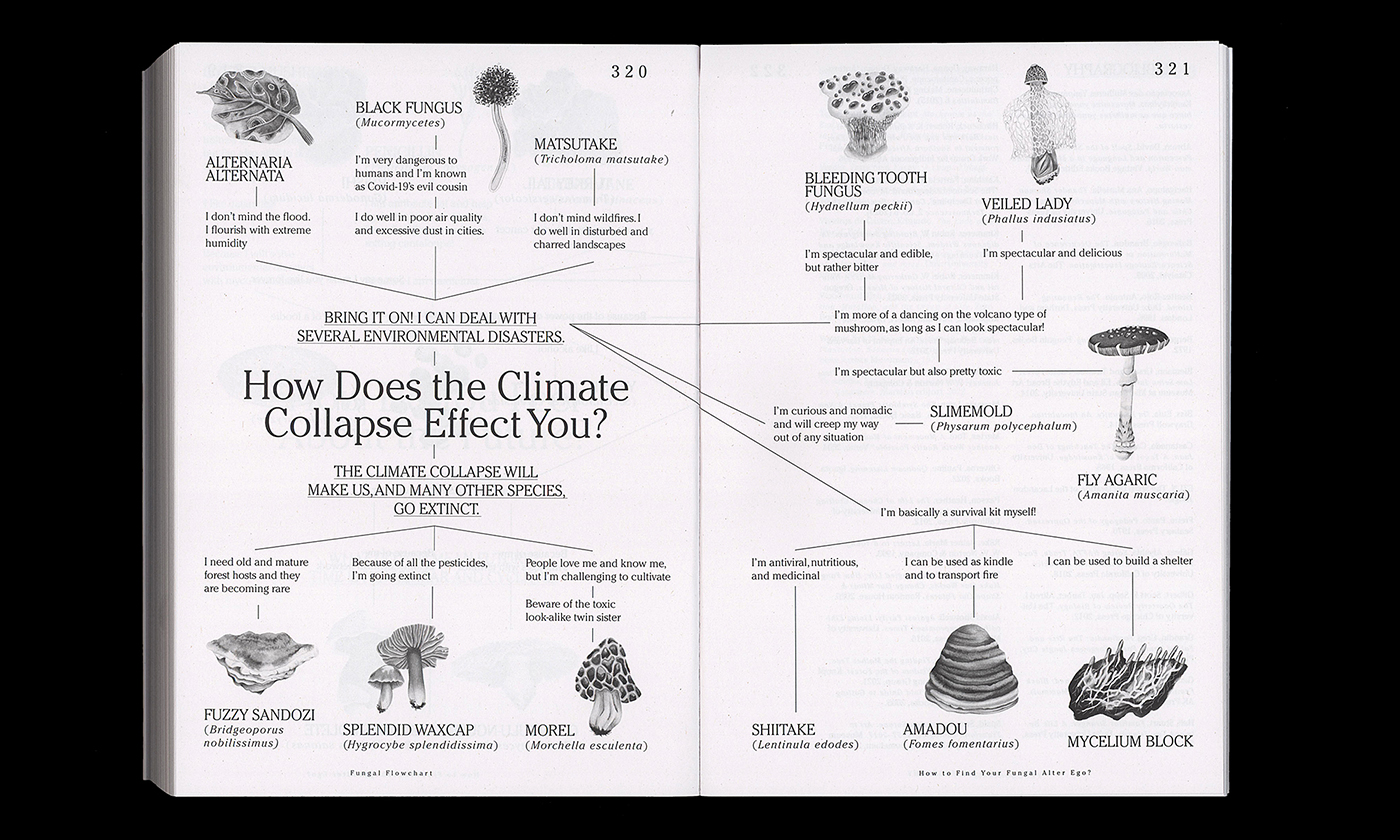Research¶
References¶
Fungi is a system an ecosystem. They are kingdowm of their own, on their own terms and with their own terms. Fungi do not like to be boxed.
Fungi throw up questions, never answer. They do not lead to answers, but to teachings. Fungi made it clear they aren’t plant or animals and are free from sexual categorization, opening up a beautiful, ambiguous space in- between. >An in that in-betweenness there is space for many collaborations outside of our boxes, to use a contemporary term; multi species collaborations.
‘How to Move Through Different Notion of Time’ informed the teaching that addressed the importance of valuing and recognizing non-linearity, invisibility, and silence.
Mycelium can be considered a messenger in the forest ecosystem. The mycelium doesn’t consist of individuals and is instead a networked organism, an environmental sensor below the ground that holds knowledge about the status of soil and the health of the forest as a system.
Crises equal opportunities for fungi, as they present a situation in which to expand on their collaborations and therefore, increase symbiosis.
Extract of the book: Lets Become Fungal, Mycelium teachings and the arts, Yasmine Ostendorf-Rodriguez, source


Incorporating Microbial Data in Climate Change Models Microbes in terrestrial, urban and aquatic environments consume and generate greenhouse gases that contribute to climate change. They may serve as carbon sources or sinks, either adding to or reducing the net flow of global emissions. Incorporating microbial processes into Earth climate models can aid in predicting storms, agricultural yields and the climate-induced spread of water-borne and vector-borne diseases. These models will help public health and policy makers plan for and outline effective strategies to address climate change threats. Source.


The book of Paul Stamets, Growing Gourmet and Medicinal Mushrooms
-
Knitted cultivation: Textiling a multi-kingdom bio architecture
-
Scientists’ warning to humanity: microorganisms and climate change
-
Multi-Organism Composites: Combined Growth Potential of Mycelium and Bacterial Cellulose
-
From The Anthropocene To The Microbiocene by Tobias Rees’s
«For billions of years, bacteria, viruses, fungi and archaea were Earth’s sole living inhabitants. They occupied every ocean, river and lake, every inch of land and air. They drove the chemical reactions that created the biosphere and thereby created the conditions for the evolution of multicellular life.
Bacteria made the oxygen we breathe, the soil we till and the food webs that sustain our oceans. Viruses regularly kill vast swaths of bacteria and thereby regulate the biogeochemical cycles on which all of life depends.
All organisms that have ever lived emerged from bacteria and viruses: All organisms, including us humans, are inseparably interwoven with and contingent on them.
Today, we face the challenge of leaving the age of Man and learning how to be human in the Microbiocene. Each of these ages has its distinctive political systems, its distinctive modes of production and its distinctive concept of technology.»
-
Nausicaä of the Valley of the Wind, Hayao Miyazaki, 1982-1984


-
Neri Oxman
- Natsai Audrey Chieza
